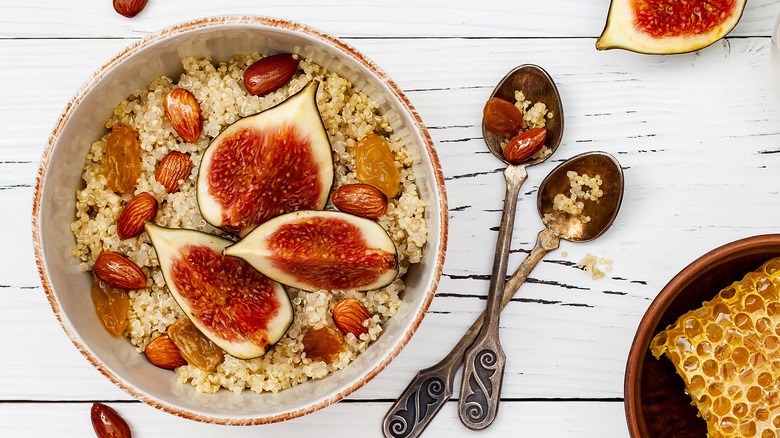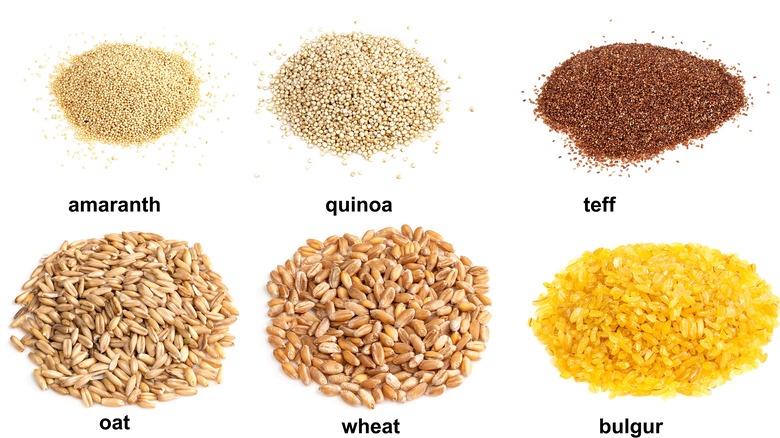New Survey Finds A Growing Interest In Ancient Grains
According to National Geographic, grain is the harvested seed of grass. People have consumed grains for about 75,000 years, and the oldest grain silos, located in modern-day Jordan, are 11,000 years old. Discovered in 2009, they still contained small amounts of barley and an ancient type of wheat. Grains are also known as cereals, and they're an essential component of both human and animal nutrition all over the world. We get an average of 48% of all our calories from grains, though the ones we consume today differ from those our ancestors ate.
There's an extraordinary variety of grains, and the ones we're most familiar with today are wheat, rice, oats, and corn. That leaves a lot of grain to explore, though, and Ardent Mills, a Denver, Colorado-based flour miller and plant-based food company, was curious about what consumers know about ancient grains. The company's survey, conducted from August 19-23, 2022, reveals interesting statistics about the interest in and understanding of ancient grains like quinoa, millet, buckwheat, and amaranth. To be fair, it's easy to understand why consumers would be confused about grains. Some sources like Everyday Health discussing quinoa, for example, point out that it's technically a seed rather than a true grain. Still, it certainly qualifies as a grain according to the National Geographic definition. In any case, how do we feel about ancient grains?
Consumers are hungry for ancient grains
Ardent Mills' online survey collected responses from 1,001 adults who answered questions about their understanding of ancient grains, nutrition, and the likelihood they'll purchase ancient grains. Overall, the survey revealed a strong interest in ancient grains, with nearly 75% of respondents intending to eat more ancient grains over the next year. More than 80% of respondents said they're interested in healthy eating, and 47% said that plant-based foods are an important part of their dietary goals.
What's perhaps most interesting, though, is what the survey revealed about consumers' understanding of ancient and even modern-day grains. There's some educational work to be done because 96% of those surveyed correctly identified wheat as a grain, but only 17% correctly identified chickpeas as a grain. And as for quinoa, one of the most popular ancient grains, only 66% correctly labeled it as such. There's little understanding about more obscure ancient grains like teff, white sonora, amaranth, and spelt, which presents an opportunity to educate consumers and grow the consumption of and interest in ancient grains, a food source that could be part of the solution for alleviating future food shortages. Some ancient grains may also be a great option for those who need to avoid gluten. While not all ancient grains are gluten-free, Beyond Celiac explains that amaranth, millet, sorghum, fonio, and teff are all good gluten-free grain options.

